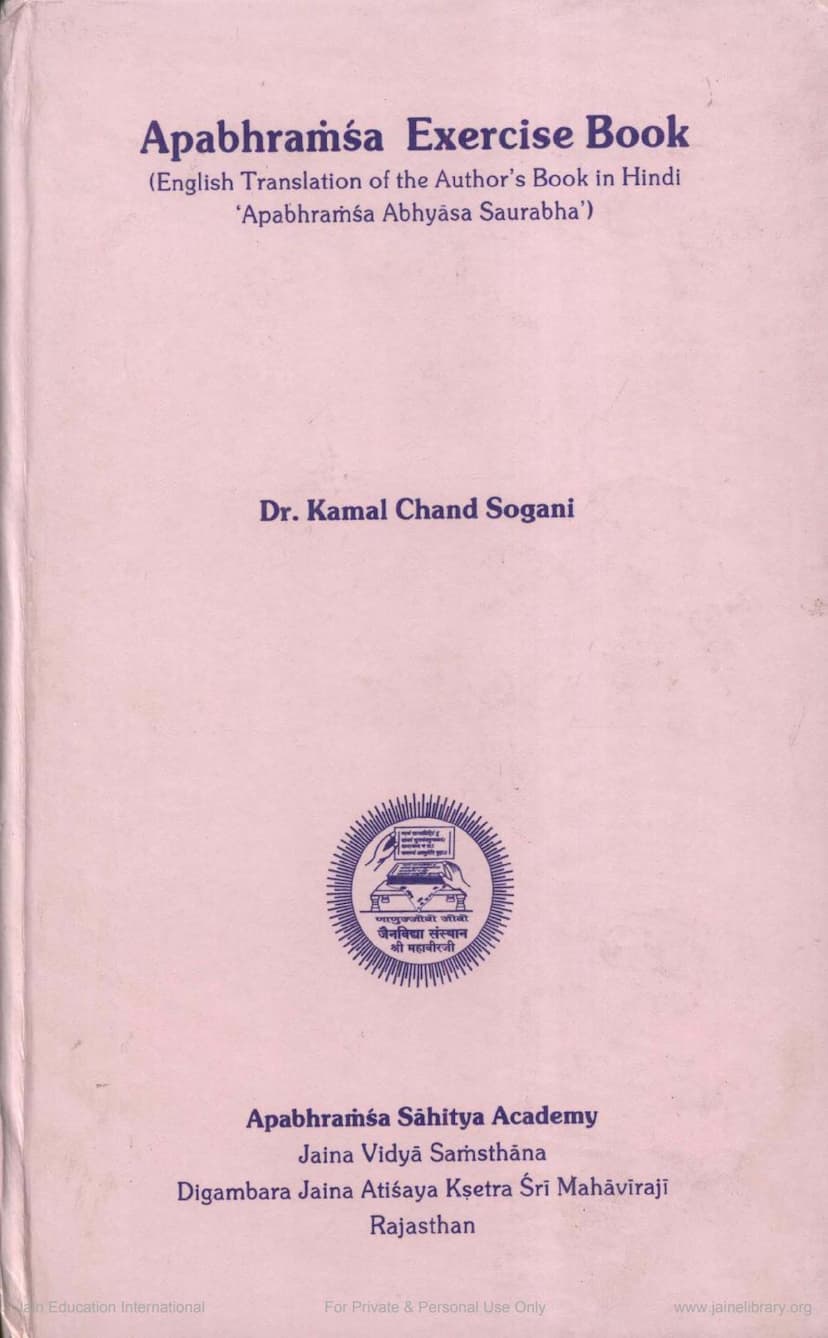Apbhramsa Exercise Book
Added to library: September 1, 2025

Summary
This document is an English translation of Dr. Kamal Chand Sogani's Hindi book "Apabhramsa Abhyāsa Saurabha." Titled "Apabhramsa Exercise Book," it serves as a practical guide for learning the Apabhramsa language, a significant Indo-Aryan language that evolved from Prakrit.
The book is structured into a series of exercises (Exercises 1 through 37), each focusing on specific grammatical concepts and their application in sentence construction. The exercises cover a wide range of Apabhramsa grammar, including:
- Tenses: Present, Imperative, Future, and the use of Past Participles for past tense.
- Verb Forms: Transitive and intransitive verbs, impersonal forms, irregular passive voice, and irregular past participles.
- Nouns: Declension of nouns based on their endings (a, ā, i, ī, u, ū) and genders (Masculine, Feminine, Neuter) across various cases (Nominative, Accusative, Instrumental, Dative, Ablative, Genitive, Locative, Vocative).
- Participles: Past Participles (Active and Impersonal forms), Present Participles, Absolutives, Infinitives, Obligatory and Potential Participles.
- Pronouns and Indeclinables: Usage of various pronouns and indeclinable words.
- Causative Verbs and Suffixes: Formation and usage of causative verbs and retainers of innate meaning suffixes (Svarthika Suffixes).
- Grammatical Analysis: A concluding section provides a detailed grammatical analysis of a story titled "Amangaliya Purisaho Kaha" (The story of an inauspicious man or human being).
Each exercise includes translation tasks from English to Apabhramsa, requiring the learner to provide all alternative forms of inflected personal pronouns, nouns, and verbal forms. The book also features exercises on correcting grammatical errors and identifying grammatical elements within given Apabhramsa forms.
The introduction highlights the significance of Apabhramsa as a bridge between Prakrit and modern Indian languages, emphasizing its role in the cultural heritage of India and its connection to Hindi literature. It also mentions the establishment of the Apabhramsa Sahitya Academy by the Digambara Jaina Atiśaya Kșetra, Śrī Mahāvīraji, to promote the study of Prakrit and Apabhramsa through correspondence courses.
The book is dedicated to Dr. A.N. Upadhye and Dr. Hiralal Jain. It concludes with an extensive list of abbreviations and a guide to grammatical analysis, making it a comprehensive resource for students of Apabhramsa.